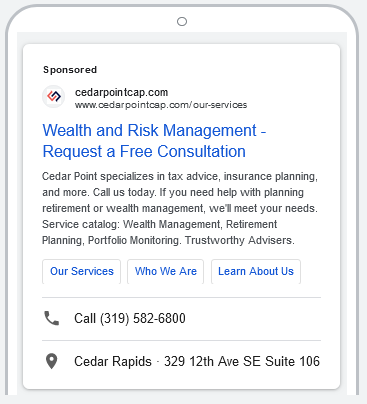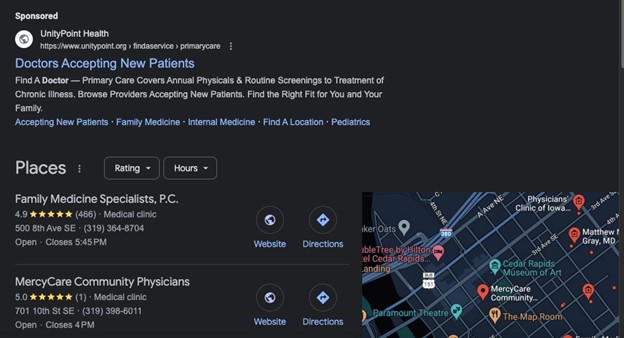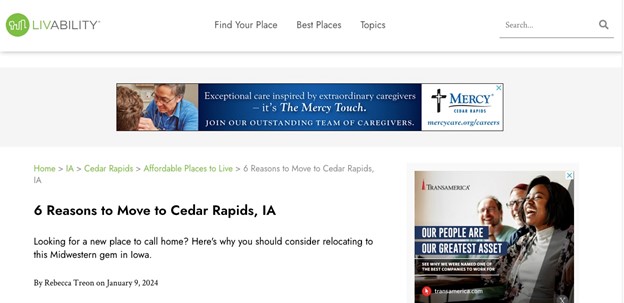Getting customers’ attention online is hard for even the strongest brands. You need a competitive SEO strategy and a strong social media presence, but most companies also need to advertise.
For companies investing in their digital marketing, search and display advertising makes it easier to get in front of prospect and current customers while they’re looking for information.
These two types of ads work hand in hand to create a comprehensive online advertising strategy, but they also have their own strengths and weaknesses that you need to keep in mind if you’re thinking about launching a new paid strategy. In this blog, our team of marketing experts breaks down the differences, and explains how you can combine search and display advertising to drive more traffic, conversions and sales.
Search Advertising vs. Display Advertising
Both search and display advertising offer the ability to get your message in front of customers—they just do it in different ways. The core distinction between display ads and search ads is the difference between “push” and “pull” advertising.
Search Advertising
Search advertising uses search platforms like Google and Bing to deliver paid placements of sponsored text on search engine result pages (SERPs).
A search ad only appears when a customer actively inputs keywords related to your industry or product. The customer is therefore “pulling” the information, and your ad is the result.
Search ads appear above or within the organic search results on Google and Bing, and have a few components:
- Headline
- Display URL
- Description text
- Ad extensions – optional link or contact callouts

Search advertising is ideal for capturing high-intent users ready to make a purchase or take action. Most search ad campaigns also utilize highly tailored landing pages to drive visitors toward a conversion.
READ: Learn more about building your landing page framework.
Display Advertising
Display ads are the "banner ads" that have existed since the earliest days of the internet. They are purchased through a programmatic ad network, whether Google's or another platform, and strategically placed across various websites, apps, and platforms your audience visits.
In this case, your business “pushes” the ad content in front of potential customers, who might not yet be ready to respond to search advertising. Here's an example of a past display ad from UFG Insurance.
Display ads are perfect for building awareness, but are traditionally weaker at driving conversions, since very few people click on display ads these days.

When you look at the marketing funnel, a display ad is going to reach people earlier in the purchase process, while they’re still grappling with their problem and looking for solutions. Search ads have a much higher conversion rate, because the ads are reaching customers closer to the end of the marketing funnel.
Both ad types have a wide range of targeting options based on demographics, location, interests, and browsing behavior. They can even be used to retarget users who have previously visited your site or app. The Google Display Network can potentially reach 90% of internet users across more than 2 million websites, giving businesses a lot of potential eyeballs.
Search Ads vs. Display Ads at a Glance
The following five areas break down the differences between these two marketing tactics.
- Search Ad User Intent: On the hunt for something specific
- Search Ad Targeting: Specific keywords
- Search Ad Format: Text with possible ad extensions
- Search Ad Pricing: PPC
- Search Ad Goal: Immediate conversions, like purchases or sign-ups
- Display Ad User Intent: “Just having a look,” not seeking out anything specific
- Display Ad Targeting: Demographics, interests, browsing behavior, retargeting
- Display Ad Format: Images, videos, interactive elements
- Display Ad Pricing: Cost-per-thousand-impressions (CPM) or pay-per click (PPC)
- Display Ad Goal: Building awareness, retargeting

Search Ads vs. Display Ads: Visualizing the Difference
Let’s look at some real world examples of how businesses might utilize search or display ads.
Search Ads:
- A family-owned pizzeria in Cedar Rapids wants to attract new customers during peak dinner hours. They target keywords like "pizza delivery near me," "best Cedar Rapids takeout," and "Friday night dinner options." When users search for these terms with local intent, the pizzeria's search ad appears, highlighting their fast delivery and delicious options, and enticing users to order online.
- A local accounting firm is mounting a B2B campaign, targeting small businesses in Cedar Rapids and Iowa City. They select keywords like "Cedar Rapids tax preparation," "payroll services for small businesses," and "business accounting software." When business owners search for these terms, the firm's search ad appears, emphasizing their expertise in helping local businesses.
Display ads:
- A new art gallery showcasing local works inspired by Grant Wood’s legacy launches in Cedar Rapids. The gallery creates eye-catching display ads featuring captivating artwork. These ads are placed on local event calendar websites and social media platforms to build awareness among Iowa art enthusiasts.
- An Iowa City-based based dental practice offers teeth whitening specials. They retarget website visitors who browsed the teeth whitening page but didn't schedule an appointment. Display ads showcasing the before-and-after results are placed on health and wellness blogs and social media newsfeeds, reminding users of the value of the service, and prompting them to schedule an appointment.
You can do your own anecdotal research by searching for any keyword or phrase relevant to your business and seeing what pops up as the first sponsored result. This will identify businesses using search ads. If you then navigate to a site that you think would overlap with your desired audience, you can see what display ads are populating.
For example, we ran a test on the assumption that someone moving to Cedar Rapids would probably be in the market for a new doctor.
First, we searched the phrase: “find a doctor in Cedar Rapids.”

You can see above that the search engine result page (SERP) delivered a sponsored search ad for UnityPoint Health above any organic results.
Again, based on the assumption that people moving would likely be in the market for a physician, we searched “moving to Cedar Rapids,” and the first organic (unpaid) result was a blog with moving tips.
Giving some credence to our assumption, what do we see as a banner at the top of the page? A display ad for a competing local health network.

Search Ads vs. Display Ads: The Deciding Factor
By thinking about the interplay between the two types of ads like we did above, you can decide which type of paid ad is best to deploy for your marketing campaign.
The most strategic marketing campaigns include both approaches. In fact, research published by the Harvard Business School indicated that display ads positively impact search conversion. When the two types are run in concert with one another, they act dynamically, rather than independently. One of the most interesting findings was that when display ads increased the conversion rates of search ads, the cost-per-click increased on the search ads, since they were then more valuable.
If you’re ready to deploy these dynamic digital tactics, our team of full-service marketers can help. Contact Informatics today!
Paid ads not generating results?
Our digital marketing experts can design you an ad campaign that actually works.

